‘Lost’ Gecko Rediscovered After 33 Years in Blyde River Canyon
By Eleanor Momberg – communications manager, Endangered wildlife trust
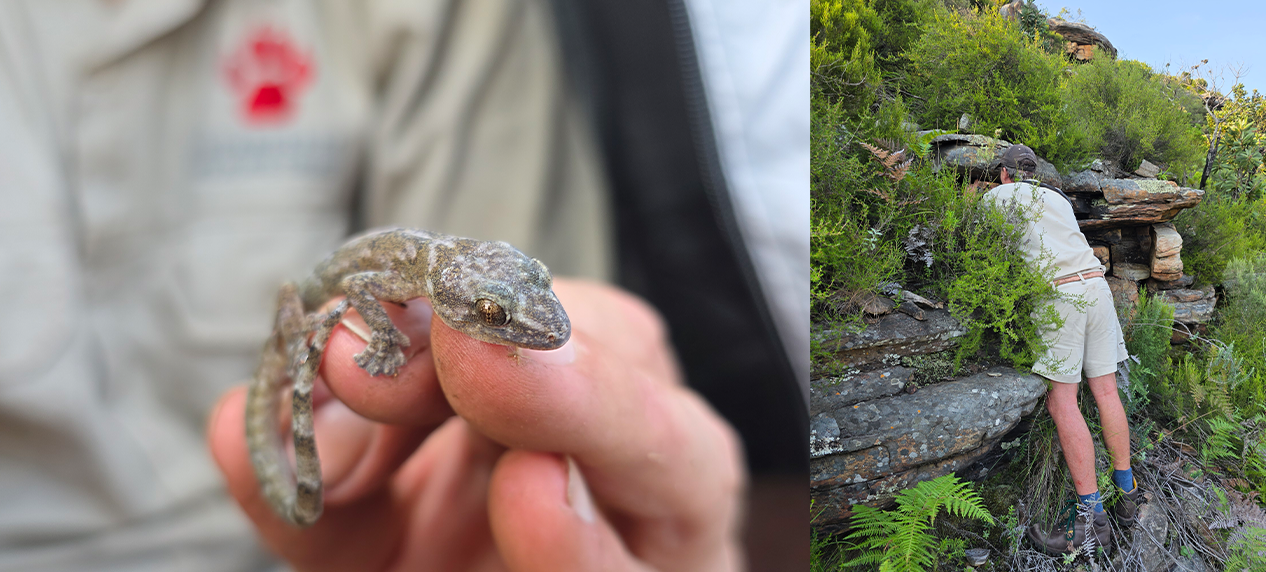
Two Endangered Wildlife Trust researchers have rediscovered a gecko species that has not been seen for 33 years. This brings to four the number of ‘lost species” that the EWT has rediscovered through an increased focus on locating and conserving elusive, less charismatic, but critically important wildlife that are often overlooked and can slip into extinction unless urgent action is taken.
“When we discovered the first Blyde Rondavel Flat Gecko after many hours of searching (and many doubts as to whether we would be successful), we were ecstatic! For me, the biggest joy, though, is knowing that the species still exists, and apparently in healthy numbers,” said EWT ecology manager Darren Pietersen.
His friend, Birds of Prey Programme manager John Davies, was just as excited as he described a process of more than seven years that finally led to the helicopter flight to the top of one of the Blyde River Canyon Rondavels in May, and the ultimate rediscovery of the gecko.
“John is basically my partner in crime, and we have undertaken many interesting trips together over the years. We’ve known each other since we were about 6 years old, and throughout primary school, we undertook many interesting adventures together. Our earliest ‘research’ included a ‘mark-recapture’ study of Rock Monitors, and on several occasions we dragged Rock Monitors, Southern African Pythons and who knows what other creatures into his parents’ house (much to his mother’s chagrin!),” says Darren.
“Darren is one of my best friends. He has always been interested in Afroedura, and geckos in particular,” says John, adding that Darren’s dad knew Dr Niels Jacobsen, who first discovered the Blyde Rondavel Flat Gecko (Afroedura rondavelica) in December 1991.
The initial discovery, says John, appeared to have happened by chance as the helicopter in which Dr Jacobsen and his colleagues were travelling had crashed on top of the Rondavel, leaving them there for two days before being rescued. It was during this unexpected field trip that this particular gecko species was found.
“This one always stood out as a question mark. Beyond the literature and a couple of specimens, nothing else was known about them,” he says.
“I’ve always enjoyed studying the lesser-known or harder-to-study species – often cryptic species that occur at low densities, just aren’t as charismatic as larger species. Having grown up and lived in the Hoedspruit region for many years, I was always aware of the presence of the Blyde Rondavel Flat Gecko on its near-inaccessible inselberg, but it never seemed plausible that I would ever be able to go and look for it,” says Darren.
In their quest for rediscovery, Darren and John hiked up to the base of the three rondavels, where they found a number of other species of gecko. It was then that they realised that the only way to find the Blyde Ronvadels Flat Gecko was to get to the top of the mountain.
Many different approaches to accessing the site were considered, and seven years and much paperwork and negotiation later, Darren had secured the necessary permits to go in search of the gecko.
“It took more than two years to get the necessary research permit, and in the interim I was fortunate to take up employment with the EWT, which opened additional opportunities for me,” he says adding that the EWT’s Conservation Planning Specialist Unit also assisted greatly, providing the majority of the funding for the flight.
“It was only once John and I actually had our feet firmly planted on the inselberg that I was willing to accept that the expedition was actually happening – and I was elated!”
Although the top of the Rondavel is steep (between 30 and 40 degrees), it is not unsafe. However, it is densely vegetated, making it difficult to move around. John says to move 300m took around half an hour.
“Our legs were shredded”.
They camped on a flattish area for four days, searching cracks in the rocks, along ridgelines and small cliffs at night to find this nocturnal gecko.
“Sitting on the inselberg peering out over the Blyde River Canyon also made me realise how much potentially suitable habitat there is in the canyon for this and other species, and how much scope there is for additional survey work in the canyon by other keen biologists,” said Darren.
John agrees, pointing out that so much is known about larger and charismatic species, but little is known about what he calls understudied groups—the small species. He believes many more species remain undiscovered because nobody knows where, or how, to look for them.
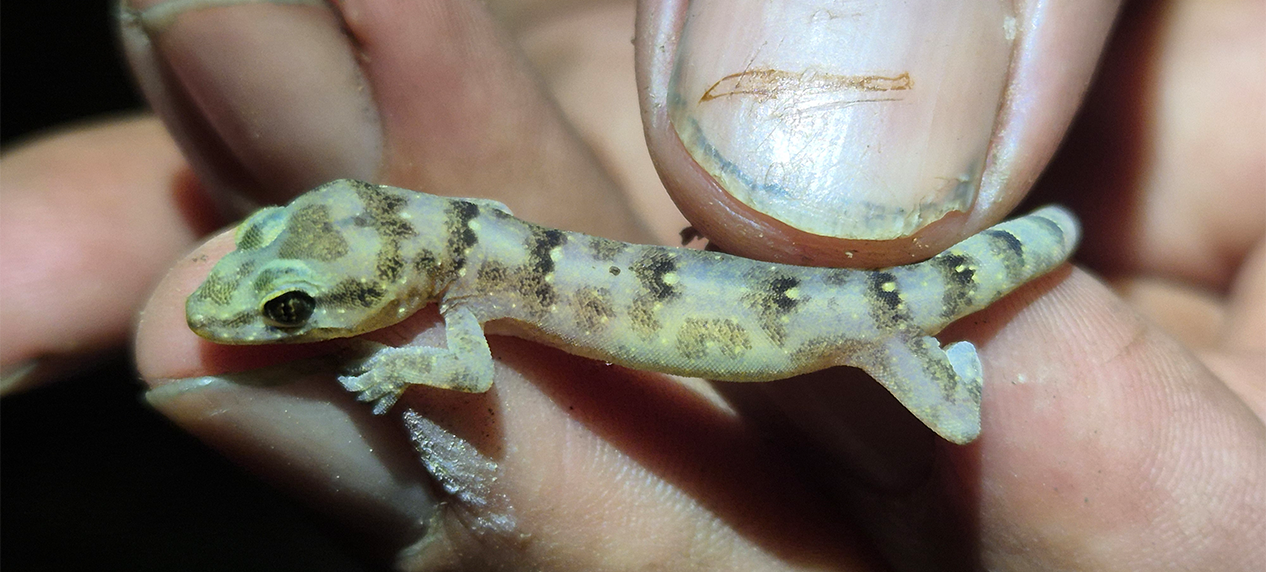
How does the Blyde Rondavel Flat Gecko differ from the one seen in our houses?
Flat geckos are superficially similar to Common Tropical House Geckos—the geckos that are commonly found in houses almost throughout South Africa. They differ in having uniformly small scales on their bodies and tails (house geckos have scattered large scales on their backs, and very noticeably spines on their tails).
Common Tropical House Geckos have:
- continuous transverse lines of scansors, also known as the sticky pads under their toes that allow them to cling to walls, glass and even walk on ceilings, under their toes.
- noticeable, large claws on their fingers and toes, whereas flat geckos lack these.
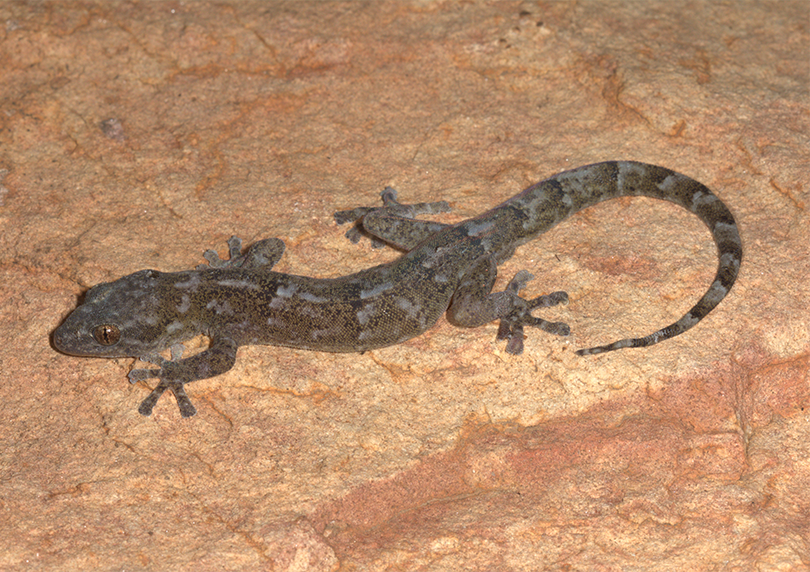
Adult female
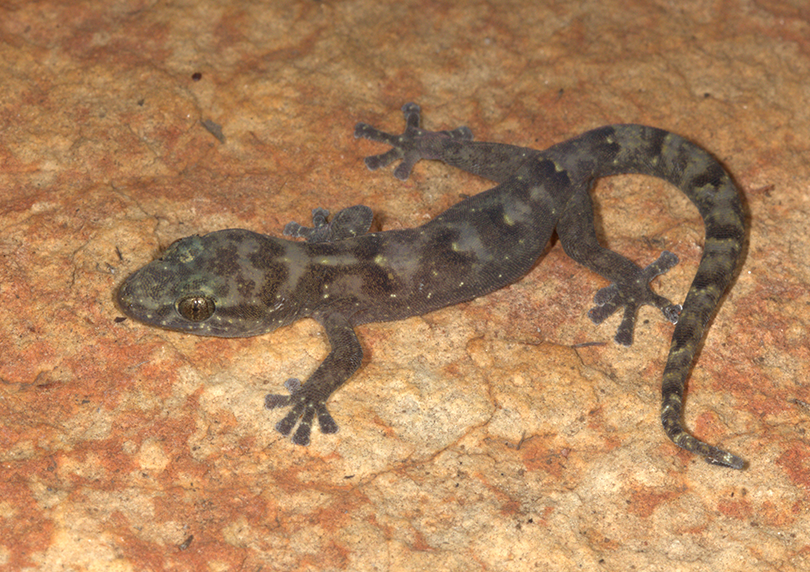
Juvenile
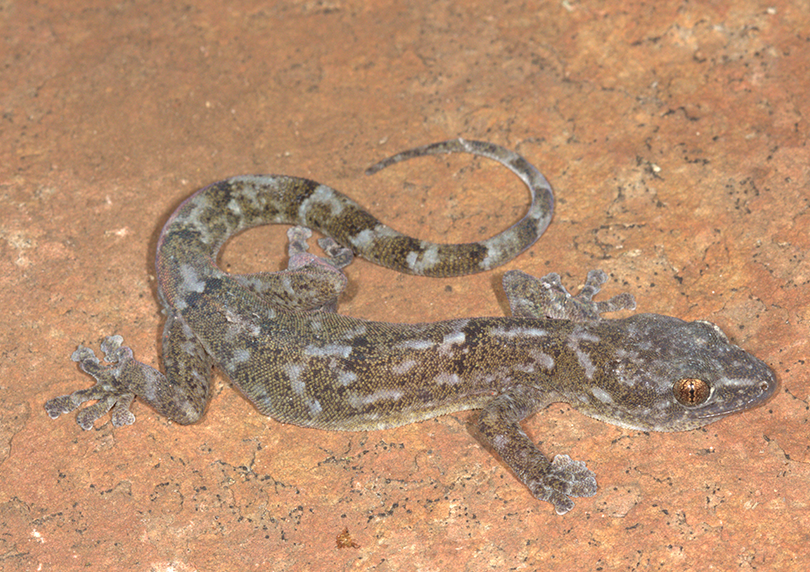
Adult Female no.2
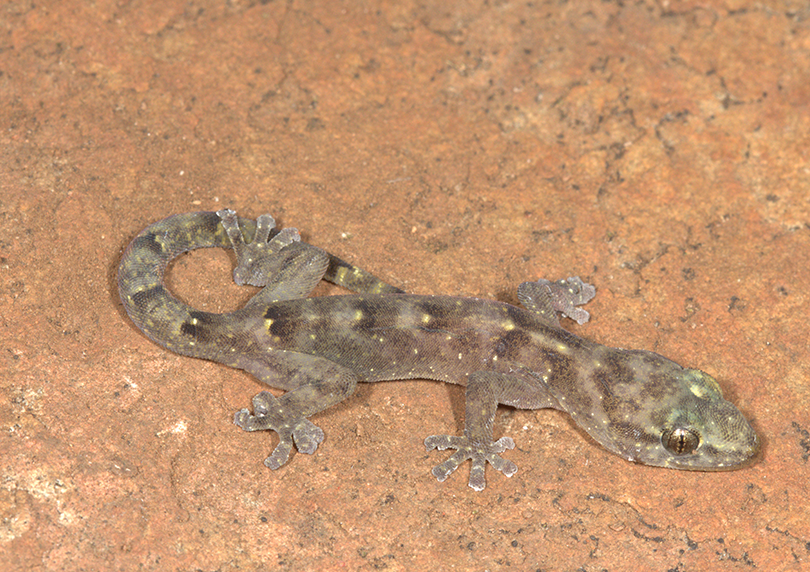
Juvenile no.2
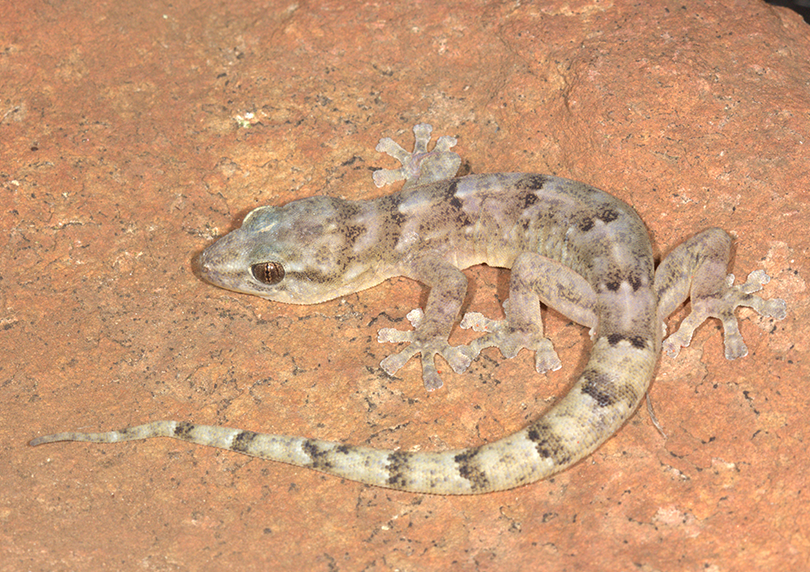
Adult Female no. 3
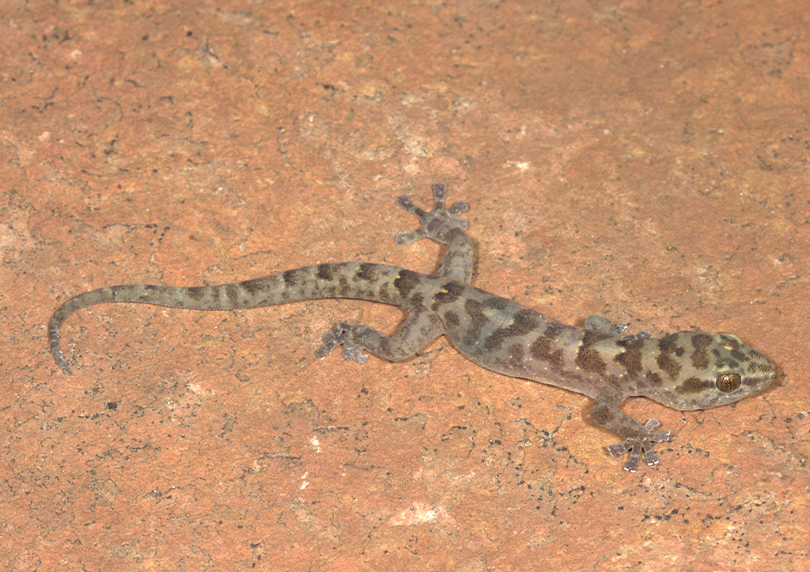
Juvenile no. 3
